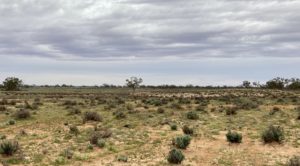What is Climate Change?

Sheep in the Landscape
I’m a proud member of “Farmers for Climate Action” (FCA) and really keen to promote all the opportunities that exist with a positive change in our lives. One reason I reckon a lot of people don’t like the term “Climate Change”, is “Climate”- well that is all out of my control, “Change”- I don’t like change.
Climate change is a fantastic complex issue that has many facets, which means that it isn’t just someone else’s problem, we all have a role and a responsibility. While we need to reduce CO2 emissions globally and that is a huge task when we are a small population on the world scale, there is many localised issues that we have the opportunity for a significant impact on. I reckon it is such a good line of thinking to reduce our footprint on the planet and do all we can minimise CO2 emissions (as well as other harmful emissions) in our lives. Reducing emissions will also be around reducing consumption of plastics and synthetics, instead look to plant and animal products.
By having a landscape that has green plants on it year-round, and allows improved infiltration of water, this cools the atmosphere and reduces temperature fluctuations, bringing about a more stable environment.
Land Use:
At the extreme end this is when we change the land use from a biodiverse plant dominated landscape, to a concrete pavement. We have significantly changed the landscapes we live in, not just by putting many houses and roads over it, our farming systems are very “annual dominant” (mainly annual plants ie wheat), this means that we don’t have green plants year round keeping our soils alive. My experience is that we have perennial plants to feed our soils and annual plants for our production. Now it isn’t this simple from a farming perspective, there is many crossovers, that is why a diversity of plants is so important. This thinking leads to a diversity of land-use and a mosaic pattern right across our land.
Urban Planning:
We live in a continent that has poor nutritional soils, low rainfall and poor infiltration rates. Add to this the attachment most of us have with living on the coast or near water and we need to take all these into account when planning. With a significant portion of our population living close to the coast with mountains between them and farming land this encourages a disconnect as we should be using excess treated water as well as stormwater in our production system. I have heard many say to me that it costs too much to pump water over the mountains, that is only correct while we don’t value landscape health, as values change, so should our plans and ideas.
This is really about each region being responsible for their own issues they create, a cities waste, could well be an agricultural godsend, without it being an ocean problem.
How can this happen?
There are many ways to achieve a change in our land use, as I have said we need to place value on our landscape functions (infiltration, growth, etc.), whether this is monetary or not negotiable or a combination is up to us. By having clear values and pricing on our food and fibre, that would allow us to add pricing on to imports that don’t meet our production system values, not a tariff, a values based transaction that means we compare nuts with nuts.
Let’s take nuts (almonds) for an example:
Almonds are a deciduous tree, normally grown in irrigation areas along our inland rivers. They are usually grown in a monoculture (single species) and maintaining bare ground between the rows. They are grown like this to maximise yields, decrease costs and increase efficiencies, so that profits can be maximised and most jobs can be done using machinery. We all as customers drive this thinking and it is very important that farmers make monetary profits so that they value the land, water and people involved.
Now if we looked at ways that almonds could be grown in a multi species orchard, with green plants year-round and ground cover constantly. This might involve 3-4 different harvestable crops (livestock might graze as well) while some plants might be grown for their insect deterrent properties or soil nutrition. For this to happen consumers need to drive this demand as chances are costs to the farmer will increase, as will the benefits to us all. As I clearly said we need to place value on aspects of growth systems so that we can all benefit from improves landscape health.
Conclusion:
We all have a role to play in this discussion, as we all consume food and fibre. One of the key steps is to gain several perspectives on this issue, so please just add mine in to the melting pot, my opinion is by no means “right”. Now with the thinking of animal products emitting more than plants being challenged, again we come back to this diversity of choices as plants and animals have a symbiotic relationship, it is never one or the other in isolation.
The key point is to keep asking ourselves a couple of questions:
- How can we improve the production of natural food and fibre, minimising waste and emissions?
- How can we live a connected life, close to work, minimising our impact on the landscape?
